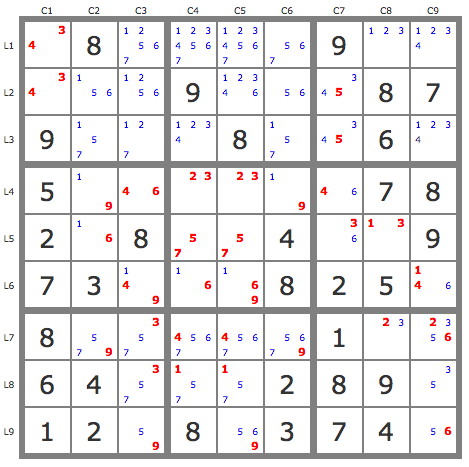Hi again Denis,
Now that we agree that singles are not whips (or any chains in your system), I still have this open question about the real whips[1]:
SpAce wrote:A side question: why is it a whip[1] instead of a z-chain[1]?
I'll get back to that question below, but first something about z-chains since they're related. I hope you understand that I'm definitely not trying to irritate you in any way, even though I'm revisiting the risky labeling/notation topic. I'm really glad we can finally have civilized conversations, and I'd like to keep it that way. I'm genuinely trying to understand the naming logic of your chains, so humor me.
Some time ago I asked why z-chains weren't called z-whips despite the whippy notation (ending with a dot), or alternately why they weren't written with a chainy notation (having both end-points). That discussion didn't end well, and instead of an answer I got a ban. So, I stopped worrying about it (just like about the funny banning policies) and accepted it as a fact of life. However, now that I looked for the whip definition I happened to notice this:
PBCS wrote:In particular, a z-chain with a global loop would merely be a z-whip.
What? Now I'm really baffled. So, there are actual z-whips and they're different from z-chains? Where is their definition? Only z-chains seem to be defined in the PBCS, but that definition surprised me as well:
PBCS wrote:Definition: in a resolution state RS, given a candidate Z (which will be the target), a z-chain of length n (n ≥ 1) built on Z is a regular chain (L1, R1, L2, R2, .... Ln, Rn) associated with a sequence (V1, ... Vn) of CSP variables, such that:
– Z does not belong to {L1, R1, L2, R2, .... Ln, Rn};
– L1 is linked to Z;
– for any 1 ≤ k < n, Rk is the only candidate for Vk compatible with Z, apart possibly for Lk;
– Z is not a label for Vn;
– Ln is the only candidate for Vn possibly compatible with Z (but Vn has more than one candidate – this is a non-degeneracy condition); in particular Rn is linked to Z.
Now that looks exactly like I would imagine a z-
chain should -- with an actual Rn instead of a dot. That would put it in the same category with biv-chains, both having actual end-points that are linked to the target, and both being reversible (even by your tighter definition). Those labels and notations would be in sync.
Why don't the current z-chains look like that? Why do they have a dot at the end, which makes them look like whips instead of chains? Did the z-whips actually look like the z-chains do now?
I asked those same questions last time (except for the last one because I didn't know z-whips even existed), with known results. Now it looks to me that they were even more legitimate questions than I thought, since at some point in time (at least when that edition of the PBCS was published) you apparently have fully agreed with my vision of the proper combinations of labeling and notation. Back then z-chains looked like chains (based on that definition), and I would imagine that the (undefined) z-whips looked like whips.
What happened? When did you start writing z-chains with the z-whip notation and why?
I can easily see that both z-chains and z-whips would be redundant, and it's better to keep just z-chains. What I don't understand is why you notate them like whips, especially now that I've seen that it's not how the PBCS defines them.
--
Back to my question at the top. Based on the newly discovered fact that z-whips have actually existed, and probably in the same form as the current z-chains, I might rather ask: why is it a whip[1] instead of a z-whip[1]? (I've understood that mere 'whip' is a synonym for 'zt-whip' instead of a generic label for all kinds of whips, but I could be wrong.)
Obviously whip[1] can't have any t-candidates, so it can't be either a zt-whip or a t-whip, which leaves only z-whip. Furthermore, since presumably all z-whips can be written as z-chains (by replacing the dot with Rn), it should mean that all whips[1] are actually z-chains[1] or even biv-chains[1]. Right? If you agree with that, then why do you insist on using a more complicated chain type unnecessarily?


